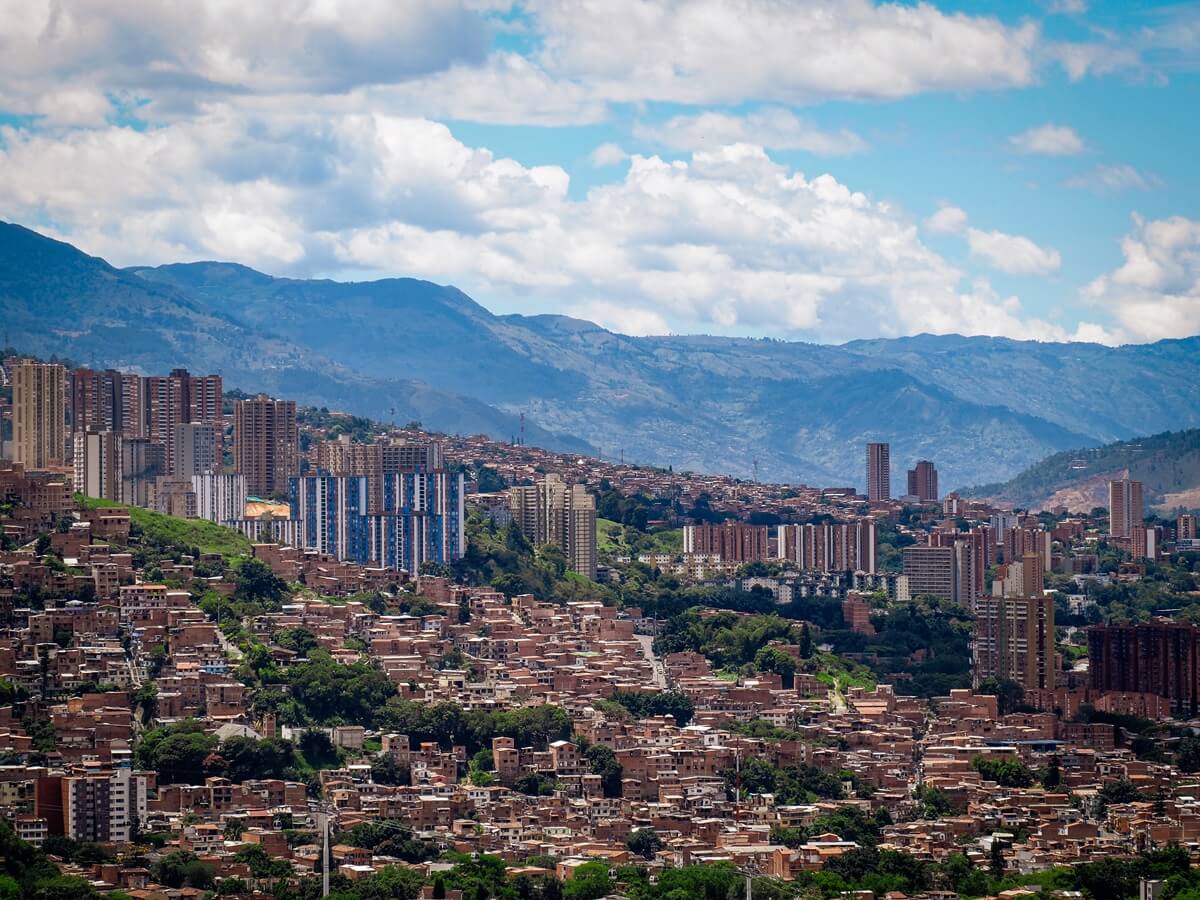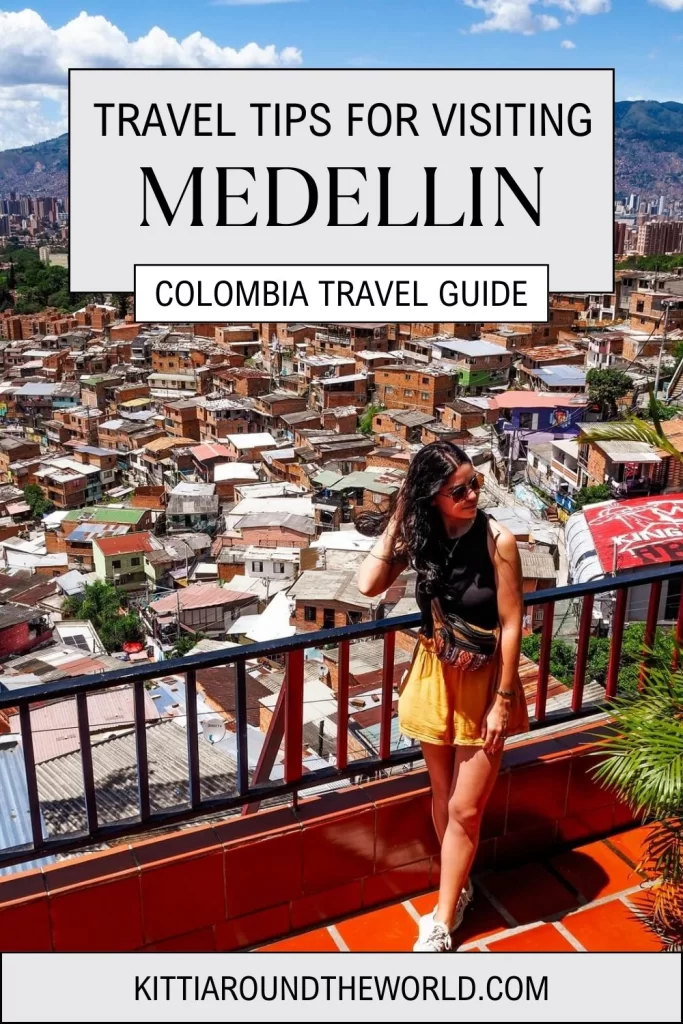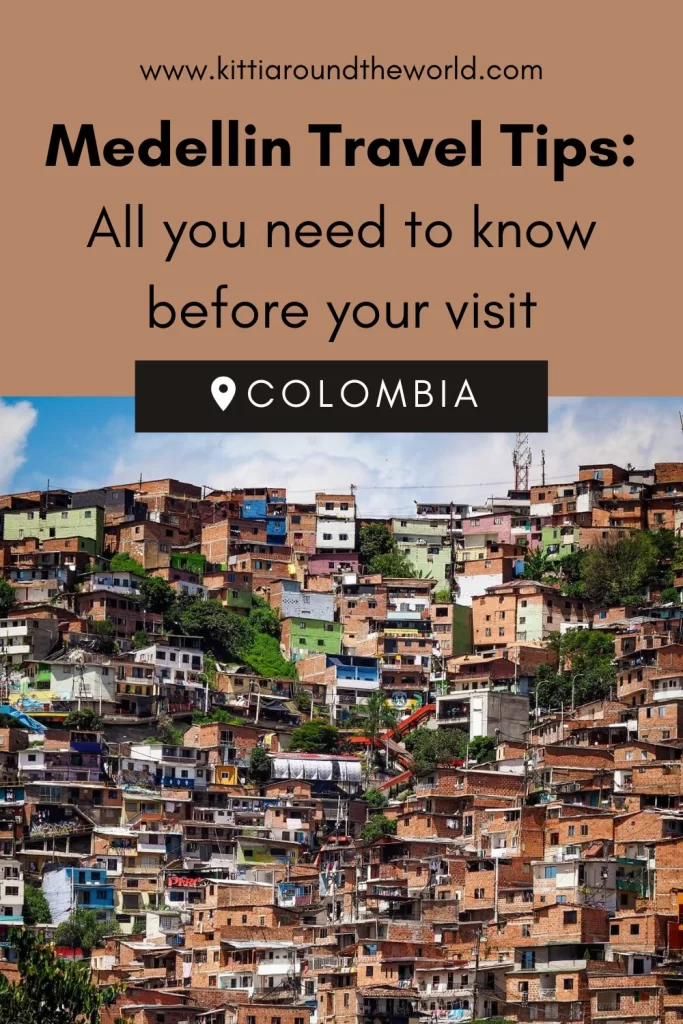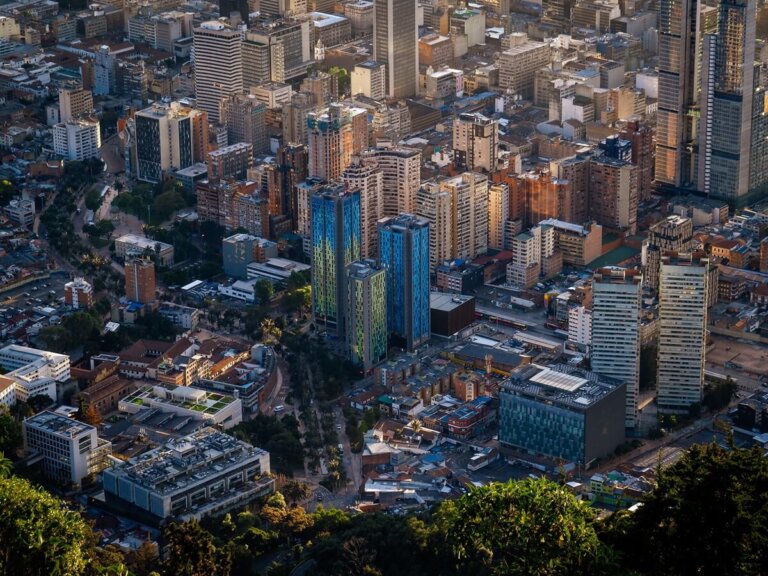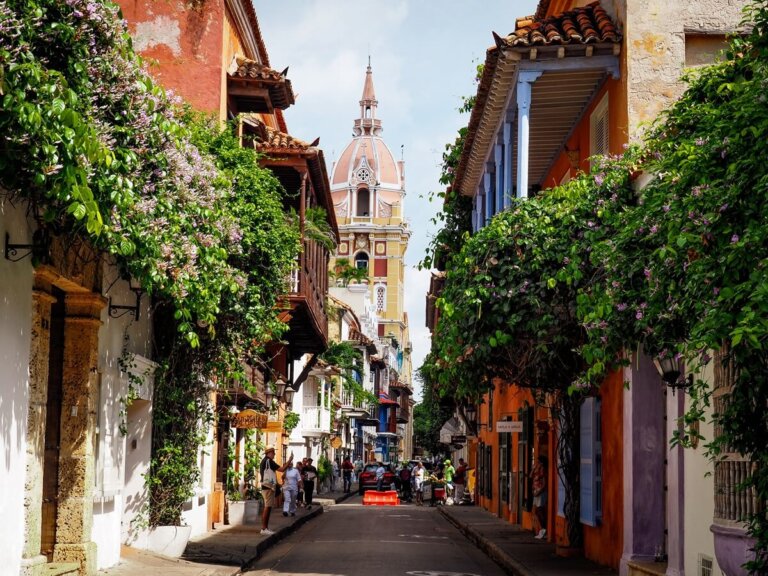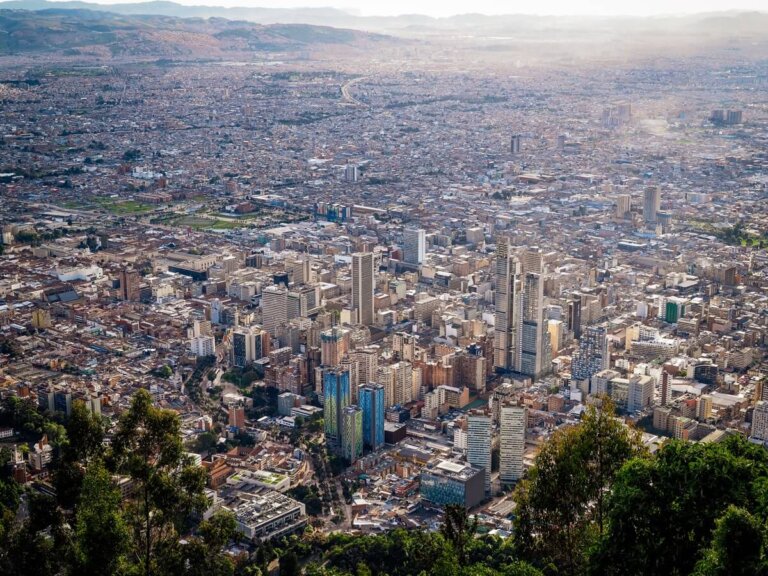Medellin Travel Tips: A Guide to Visiting Medellin, Colombia
If you’re planning a trip to Colombia, then it’s more than likely you’ll be heading to Medellin, one of the most visited cities in the country. If you’ve landed on this page whilst researching the city, then we hope you’ll find everything you want to know prior to visiting Medellin in this travel tips post.
This guide aims to answer every question you might have, such as how to get to Medellin and get around the city, where to stay and eat, how to stay safe, the best time to visit and how many days you should plan to spend there.
If you’d like to see what we got up to in the city, then make sure to watch our dedicated Medellin video on our YouTube channel. For more Colombia videos check out our Colombia Series.
Disclosure: This post may contain affiliate links, which means we may receive a small commission if you click a link and purchase something. Clicking these links won’t cost you anything, but it will help us to keep this site up and running! Learn more about our affiliate policy.
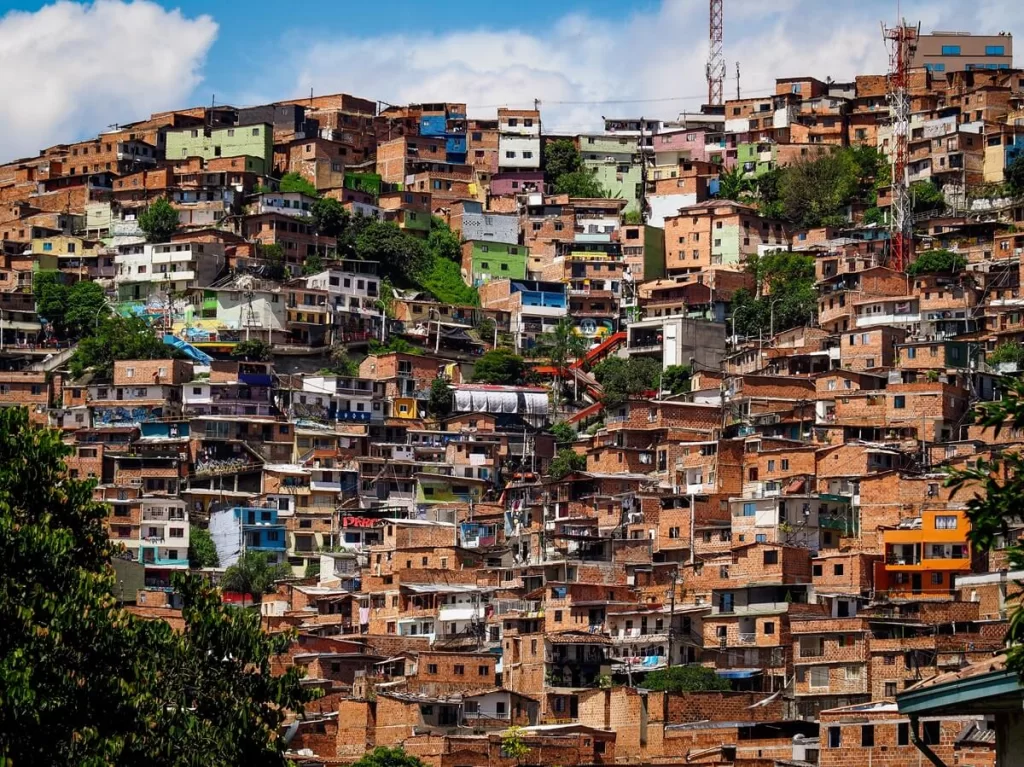
Introducing Medellin, Colombia
Medellin is located in the Aburrá Valley, over 400 km northwest of the country’s capital, Bogotá. Due to an elevation of 1,495 m (4,905 ft) above sea level, the city enjoys mild temperatures all year-round. For this reason, Medellin is often called the City of Eternal Spring.
With a population of over 2.5 million people, Medellin is Colombia’s second most populous city. It was founded in 1616 by Francisco de Herrera Campuzano under the name San Lorenzo de Aburrá. The name was changed again before the city became officially known as Medellin.
Located on the main route between Bogota and the Caribbean Coast, Medellin became an important transport hub in the 20th century. During this time, it also became a major centre for coffee production.
Unfortunately, between the 1970’s and 1990’s, drug-related violence and crime increased dramatically in Medellin. Since the 1990’s, the city has undergone a massive transformation, and in 2013 it won the Urban Land Institute’s Innovative City of the Year Award.
Today, Medellin is one of the most popular cities to visit in Colombia. In recent years, it’s also become a favoured hub for digital nomads and remote workers.
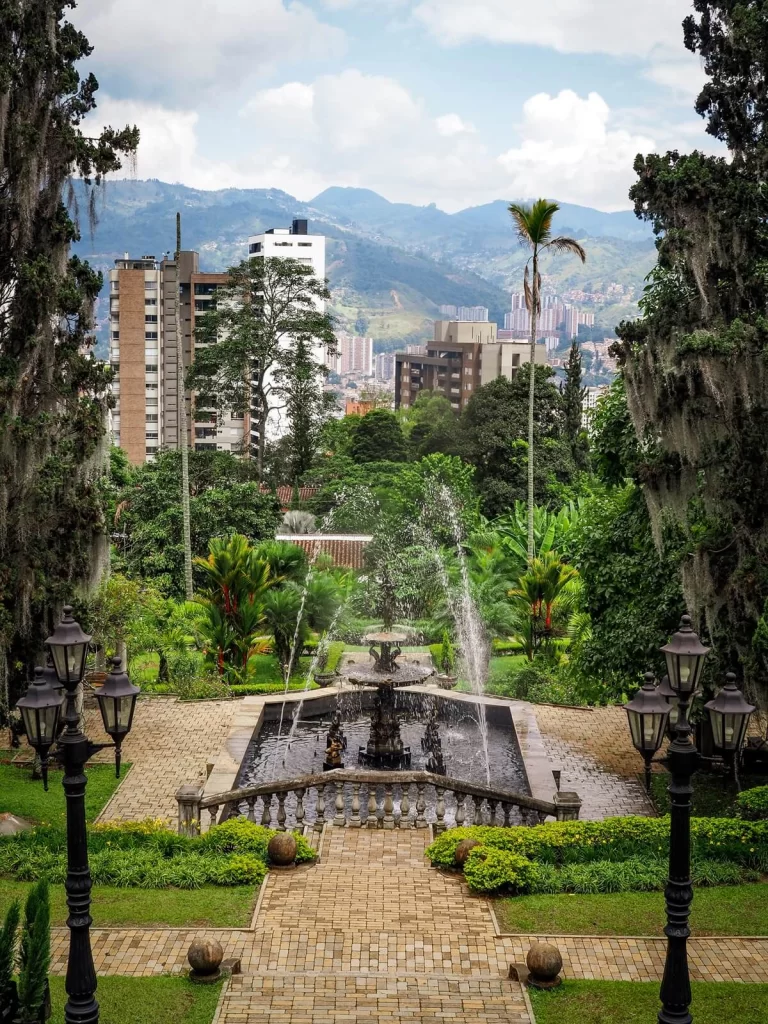
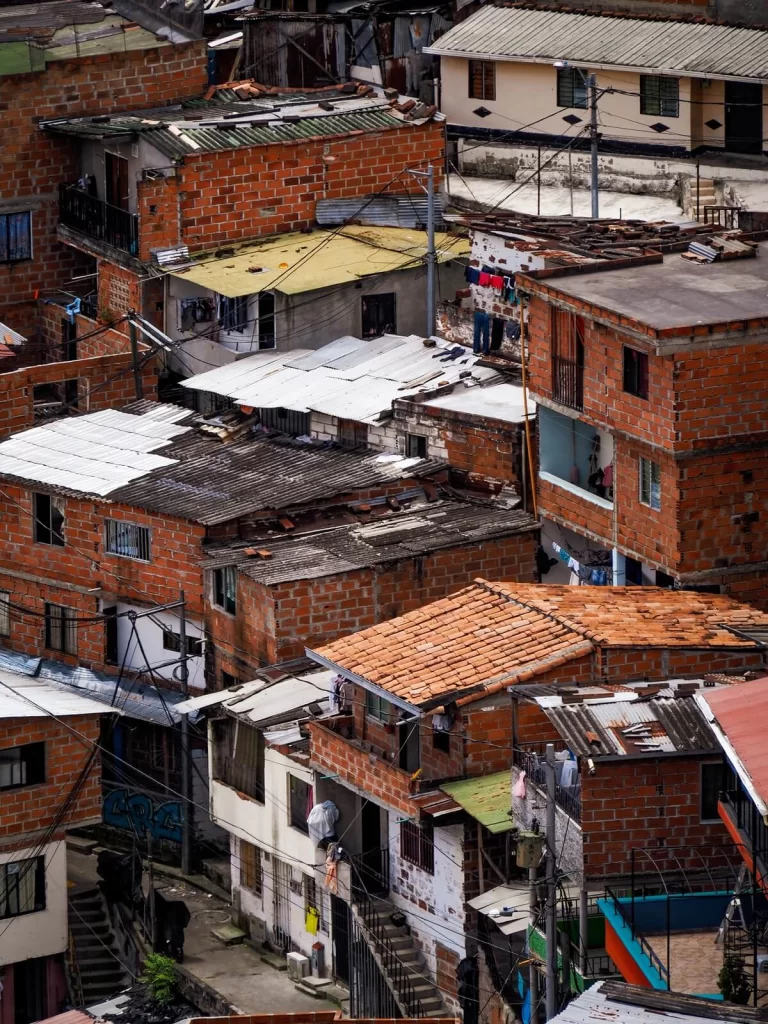
Is Medellin Safe to Visit?
Safety is one of the questions travellers always have, especially when it comes to countries like Colombia.
There’s no denying that Medellin has had a very troubled past, and that it used to be a city people would avoid. However, Medellin has undergone huge positive transformations, and safety in the city has improved massively.
Of course, this doesn’t mean that everything is perfect. It is still a huge city with some best-to-avoid areas. We’ve heard and read stories about many petty crimes happening in the city. There are also some scary and violent stories on the internet. Despite this, Medellin is considered one of the best digital nomad cities in South America, with plenty of foreigners staying in the city for longer periods.
Top Medellin Travel Tip. We never go anywhere without travel insurance, so make sure to buy one prior to your visit too. There are many different companies out there offering varying levels of cover depending on your needs. We personally use SafetyWing, who offer a high level of coverage at a much more affordable price than most other insurers.
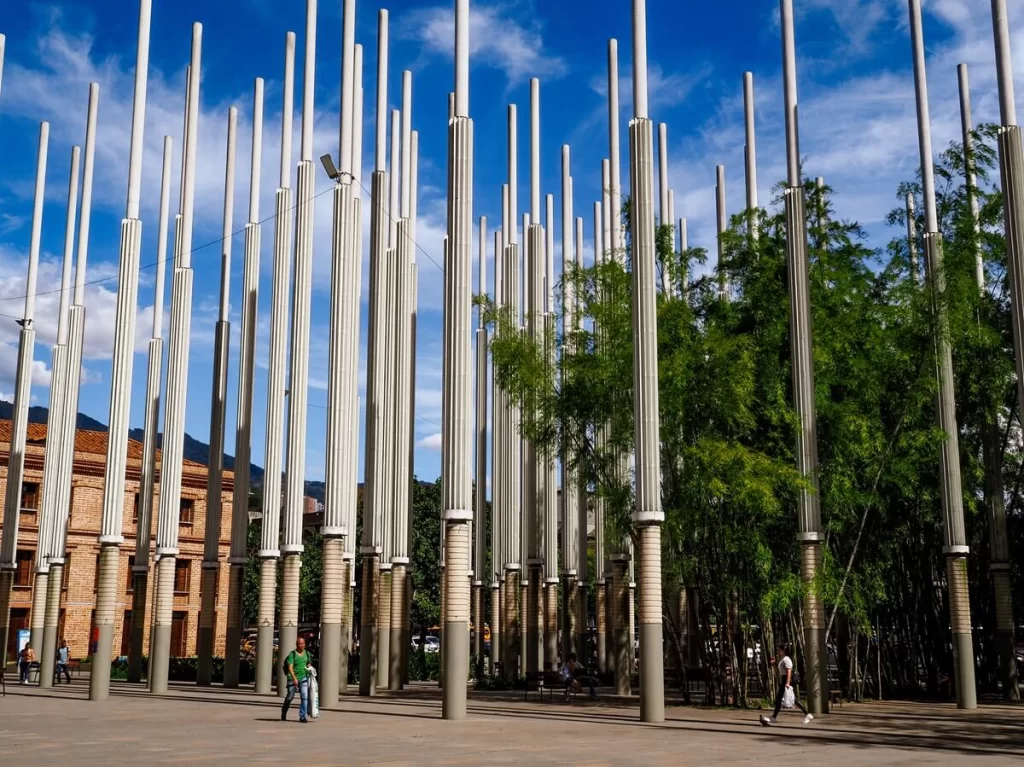
Crime Related Medellin Travel Tips
- Follow the ‘no dar papaya’ rule, which means don’t make yourself a target for crime.
- Don’t walk alone at night. Places like La Candelaria/El Centro can become unsafe after dark, so pre-book a taxi or get an Uber instead.
- Be extra vigilant in busy plazas, bus terminals and on public transportation. Keep your valuables hidden where possible and wear your backpack on your front just like the locals.
- Phone snatching is probably the most common type of theft you might encounter. Make sure not to walk out of a building with your phone in your hand. Instead, look where you have to go before you leave a building so you won’t look lost.
- Try to avoid using public transportation during rush hours. It’ll be super crowded and you’re more likely to get pickpocketed. We used money belts to store our cash and travel cards and always felt more secure with these on.
- We recommend having a physical SIM card or an eSIM so you have a local phone number with 4G coverage. For an eSIM you can use Airalo, which is an app that allows you to download a prepaid eSIM to your phone.
- Make sure to also have a VPN to avoid hackers accessing your personal data when using public WIFI. We use Surfshark, which is the only VPN that offers one account on unlimited devices.
- Research and book your accommodation in safer neighbourhoods, so you don’t have to worry about your belongings when you’re out exploring.
Health and Safety Related Medellin Travel Tips
One thing you want to avoid on your holiday is getting sick, especially in a foreign country where you might not even speak the language. Here are a few of our personal health and safety related tips to reduce the risk of getting ill or injured during your trip. For more official information, check out Colombia-specific health advice from the National Travel Health Network and Centre (NaTHNaC).
- Drinking tap water in many big cities in Colombia is considered safe. However, it can still upset your stomach if you’re not used to it. We recommend using a filtered bottle such as WaterWell, or buying bigger bottles of water and filling up a reusable water bottle, if you’re concerned.
- Don’t take drugs or talk about Pablo Escobar. This is a very sensitive topic and people don’t want this to be the main reason tourists visit the country. Under the influence of drugs you’re also more vulnerable and an easy target.
- Don’t leave your food or drink unattended, especially in bars at night, to avoid getting spiked.
- There are many pharmacies in Medellin where you can buy medicine, so only bring your prescribed medication and some basic painkillers.
- Don’t flush toilet paper down the toilet because it can block the system.
- Make sure to watch where you’re going otherwise you may end up in a random hole with a twisted ankle. More than anywhere else we’ve been in South America, Colombia is just full of pavements with uncovered manholes.
- Protests can happen on short notice, which can impact roads and transportation. Make sure to check the local news for up-to-date information.
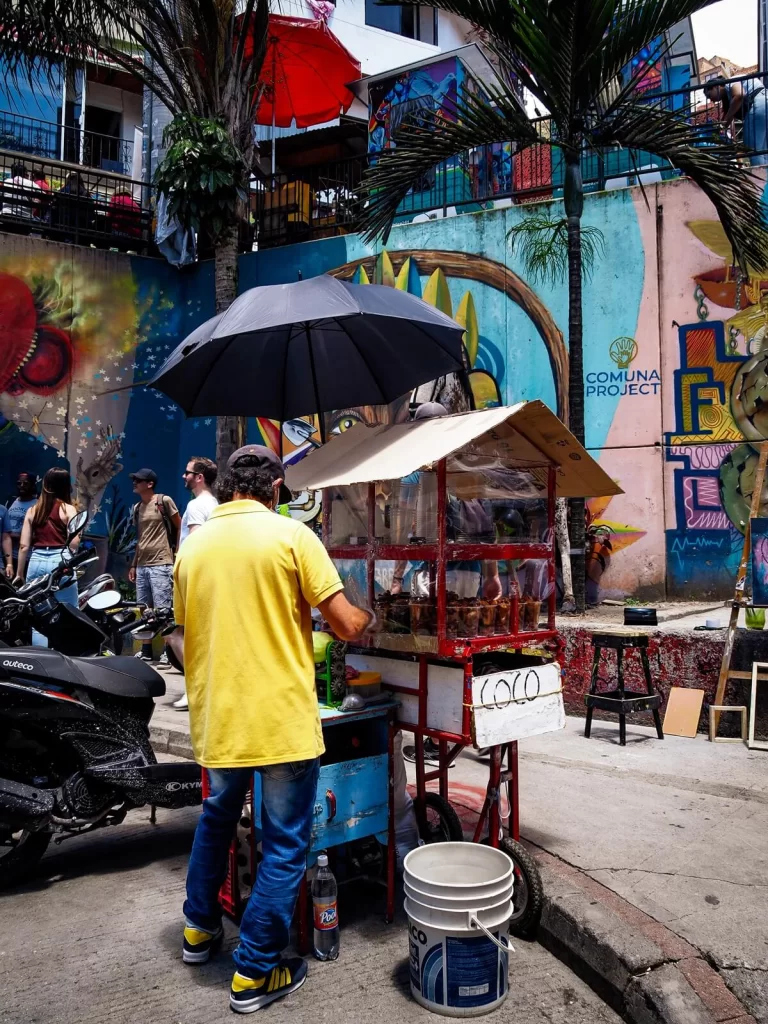
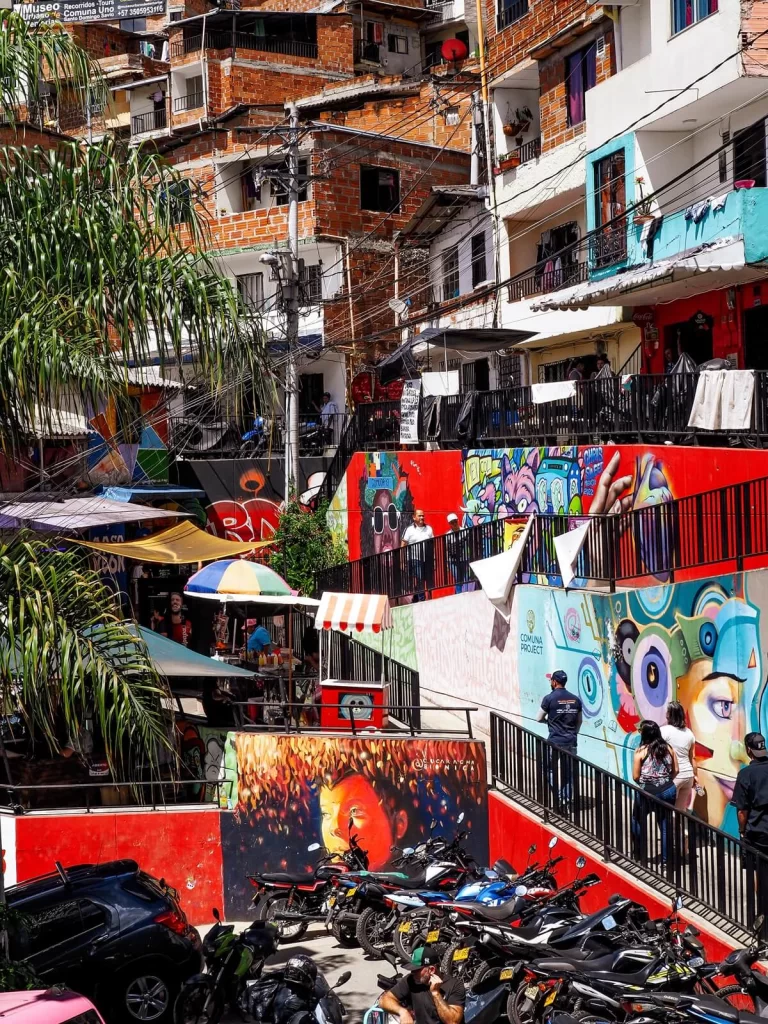
Can You Use English in Medellin?
The official language in Colombia is Spanish. Generally speaking, in big cities like Medellin there very likely will be some people who speak English, especially in the touristy areas. Medellin is also a huge digital nomad and expat hub, so you’ll hear more English as you walk around in areas like El Poblado. You can also book English speaking tours and many of the museums have descriptions in both languages.
However, don’t rely on only using English, especially if you’re planning on staying in less popular areas, using the public transport system or exploring the city without guided tours. We highly recommend learning some basic phrases in Spanish prior to your visit. It’ll come in handy when taking taxis, ordering food in restaurants or asking for directions. Colombians are very friendly and helpful.
Don’t forget to download the Google Translate app, which can be a lifesaver. Practicing a country’s native language is always nice and people will appreciate your efforts.
Top Tip – You can always ask the person if they speak English first, but come prepared in case they don’t.

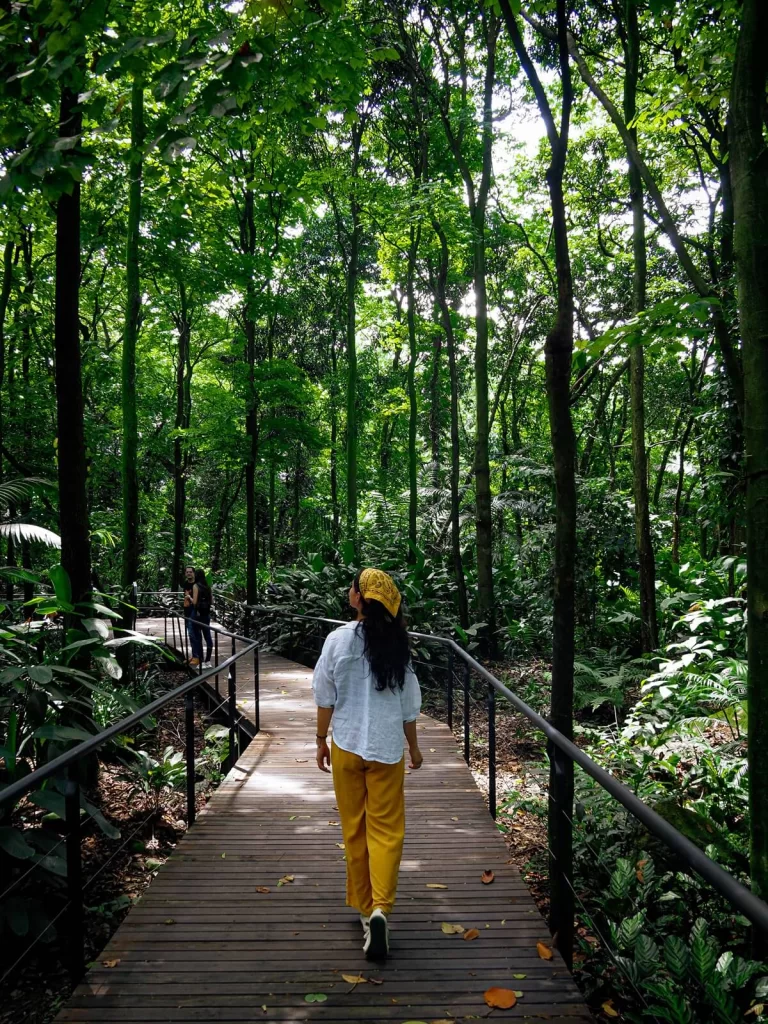
Best Time to Visit Medellin, Colombia
Medellin enjoys a spring-like climate all year round thanks to its elevation of 1,495m (4,905 ft) above sea level. The average temperatures range from 18-22°C (64-72°F). Regardless, the city still has two main seasons; wet and dry. The wet season is from April to November and the dry one is between December and March.
How Many Days to Spend in Medellin
Medellin is a big city and there is plenty to do. To get a good feel for the city, we recommend spending a minimum of three days in Medellin. That way you can take a tour of Comuna 13, visit its historic centre and wander around El Poblado. You can also squeeze in a day trip to Guatapé and La Piedra del Peñol.
However, if you have some additional days to spare, we suggest adding an extra day to your Medellin itinerary. This would allow you to explore the city at a slower pace, go on a day trip to Parque Arvi for a well needed nature retreat, or spend an additional night in Guatapé.
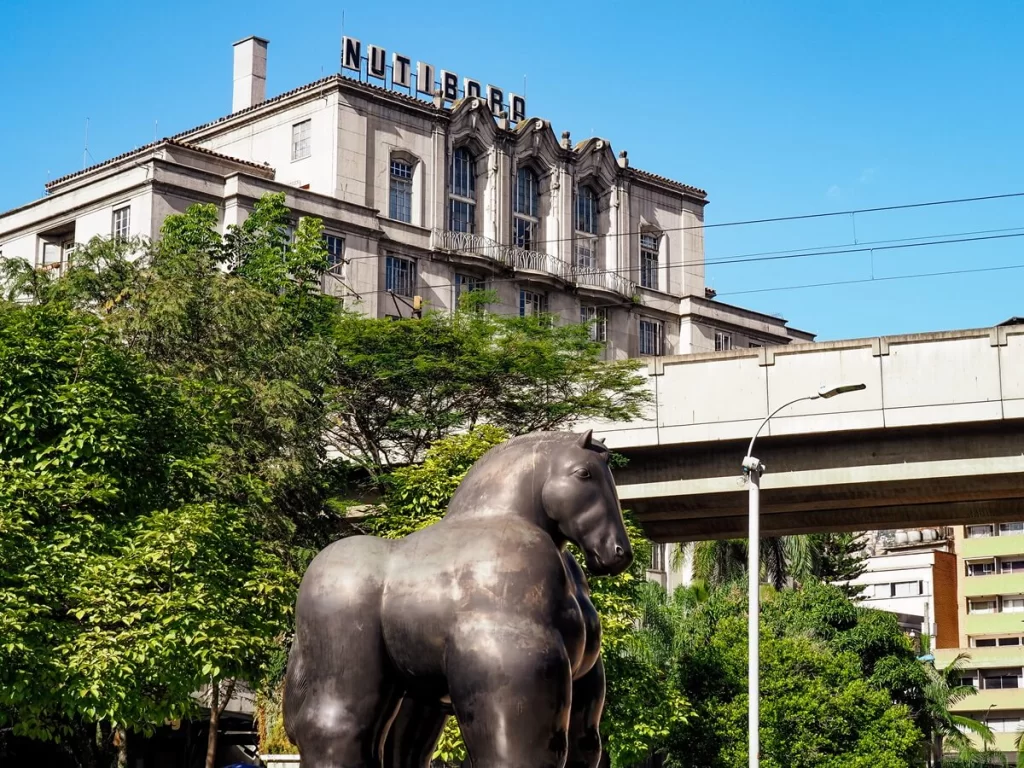
How to Get to Medellin, Colombia
By Plane. The easiest way to get to Medellin is by plane. The city has two airports, Jose Maria Cordova International Airport (MDE) and Olaya Herrera Airport (EOH). The first one provides both international and domestic flights, whilst the latter is only for domestic flights. It depends on where you’re coming from, but there are many direct flights between Medellin and other major cities in Colombia, such as Bogota and Cartagena. There are also a few direct international flights to Medellin from North, South, and Central America, as well as some from Europe. You can check where you can fly direct to Medellin from on this website.
From the airport you can reach the city centre via airport taxis, shared taxis (taxi colectivo) or the airport shuttle bus. It’s worth noting that only white taxis are allowed to serve the airport.
Find Flights to Medellin✈️
By Bus. Bus travel between cities in Colombia is a popular and affordable way to travel for both locals and backpackers alike. Travelling by bus will also give you the chance to stop at other places of interest along the way.
There are two bus stations in Medellin, Terminal del Norte and Terminal del Sur. You will arrive to the North Terminal if you’re coming from cities such as Bogota or Cartagena. If you’re arriving from places like Jardin or Cali, you would arrive to the South Terminal. Some of the bus companies you can use are Expresso Bolivariano, Expreso Brasilia, and Rapido Ochoa.
Our main online sources that helped us to find bus routes and companies operating to and from our next destinations were Busbud.com, Bookaway and Rome2Rio.
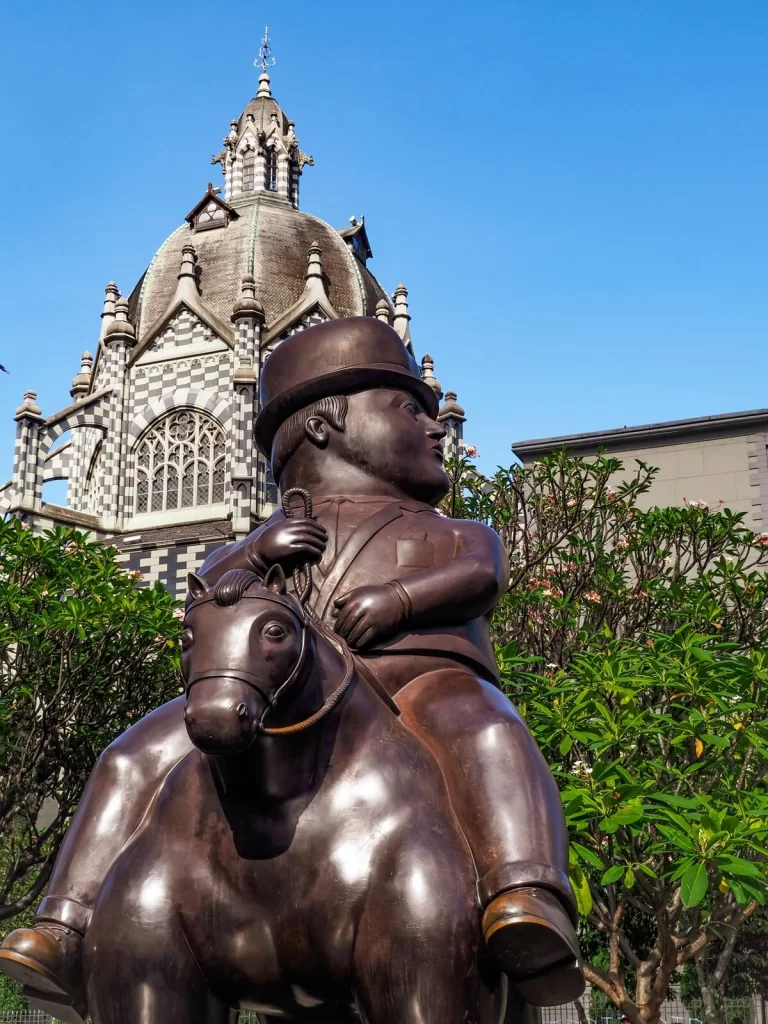
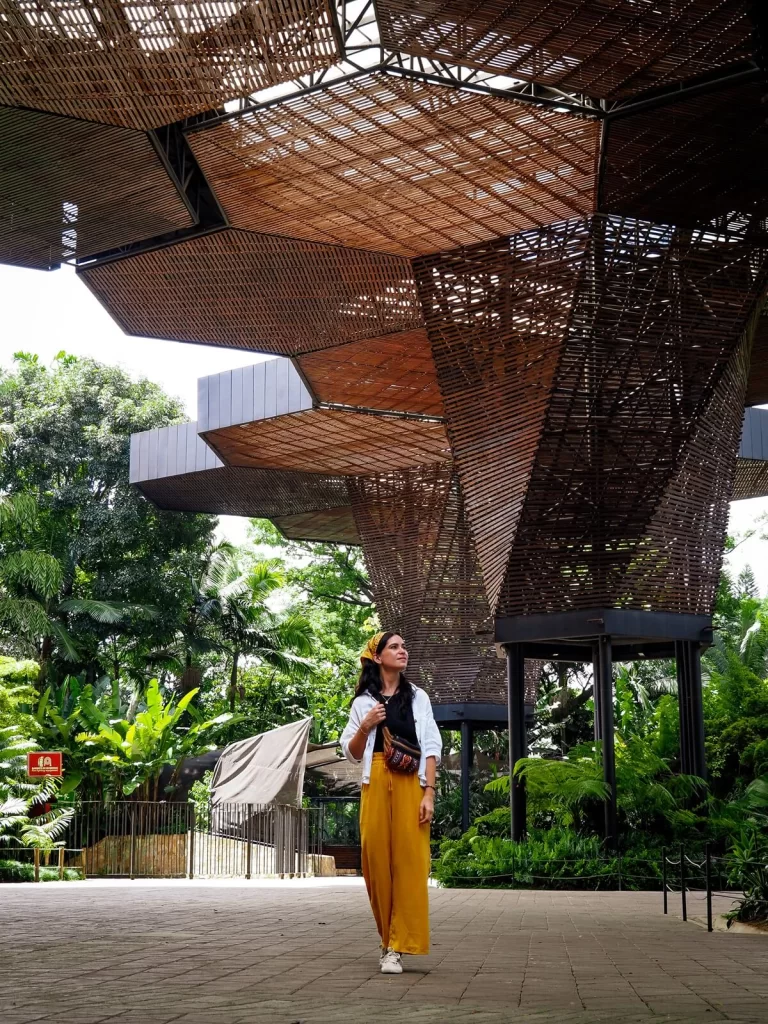
How to Get Around Medellin, Colombia
On Foot
Whenever we can, we enjoy exploring a new place on foot. You can discover so much more whilst walking than by taking taxis everywhere. Most attractions are close together once you’re within the La Candelaria / El Centro, El Poblado or Comuna 13 districts, so are great to see on foot.
If you’ve just arrived in the city, it’s always a good idea to join a free walking tour where you won’t just see, but also learn, a lot about Medellin.
Top Tip. If your visit lands on a Sunday, then make sure to join in with the tradition called Ciclovia. As part of this initiative, sections of some of the bigger avenues are closed to car traffic and opened up for cyclists and pedestrians. There are Ciclovias all across the city, such as on Avenida El Poblado.
Safety Tip. Whilst you can walk around La Candelaria / El Centro on foot, make sure to be cautious because you can quickly end up on a street that isn’t considered safe for tourists. We also don’t advise walking around on your own at night here either.
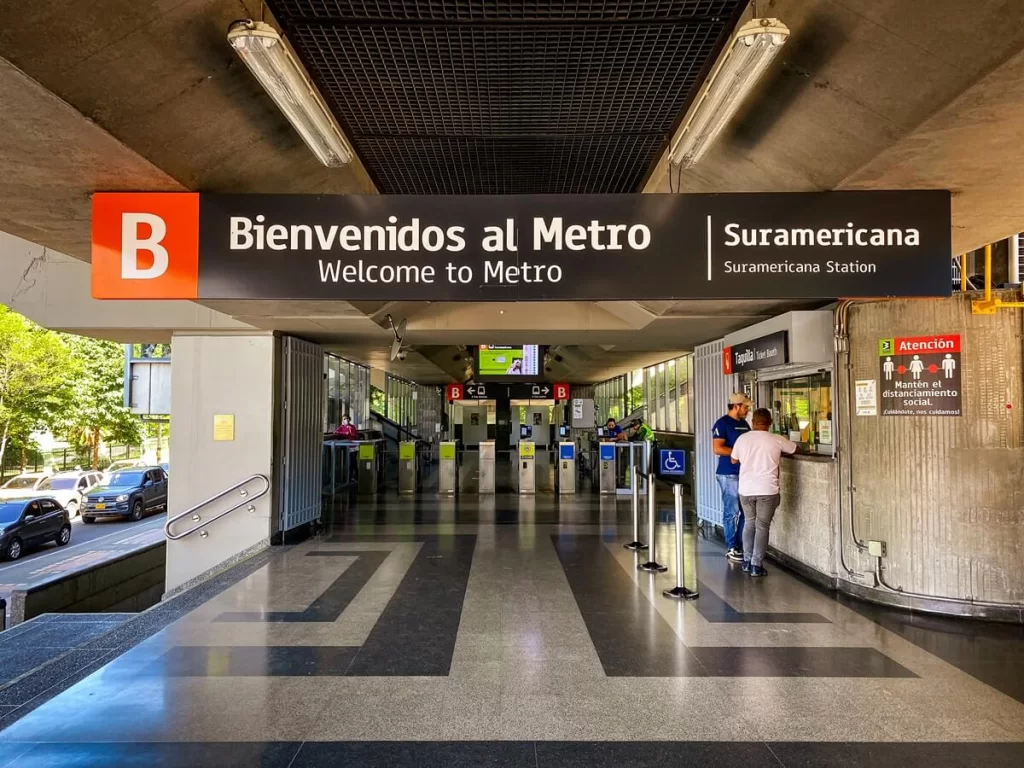
Metro
To move between neighbourhoods and visit places located further away we recommend using Medellin’s Metro. It is part of the Aburrá Valley Integrated Transport System (SITVA – Sistema Integrado de Transporte del Valle de Aburrá), and is the only metro system in Colombia.
There are currently two metro lines: Line A (north to south) and Line B (city centre to west).
In order to use the metro you’ll need to purchase a travel card, called Cívica Eventual, which costs 10,000 COP / $2.50 USD. Then you can top that up with however much credit you need for your rides across the city. A one-way journey is normally 3,210 COP ($0.80 USD). For more information on rates and routes you can check out the official website.
You can check out Medellin’s Metro Map to see which station is closest to you.
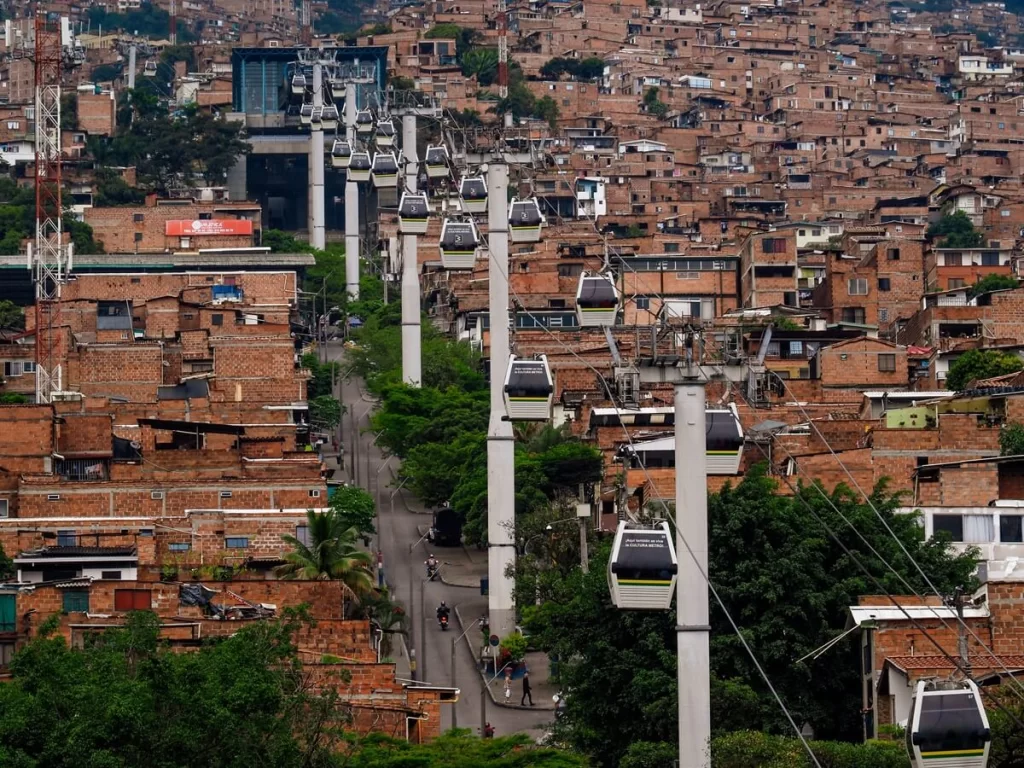
Cable Car (Metrocable)
A cable car system also operates in Medellin, connecting neighbourhoods located on the hillsides with the metro stops.
There are currently six Metrocable lines. You can use your Cívica Eventual card for the gondolas as well as the metro. The best part is that if you’re already on the metro system and wish to transfer onto the cable car, there’s no extra charge. The only route where you have to pay extra is for Line L to Parque Arvi. For this journey, a one-way ticket is 13,700 COP ($3.50 USD).
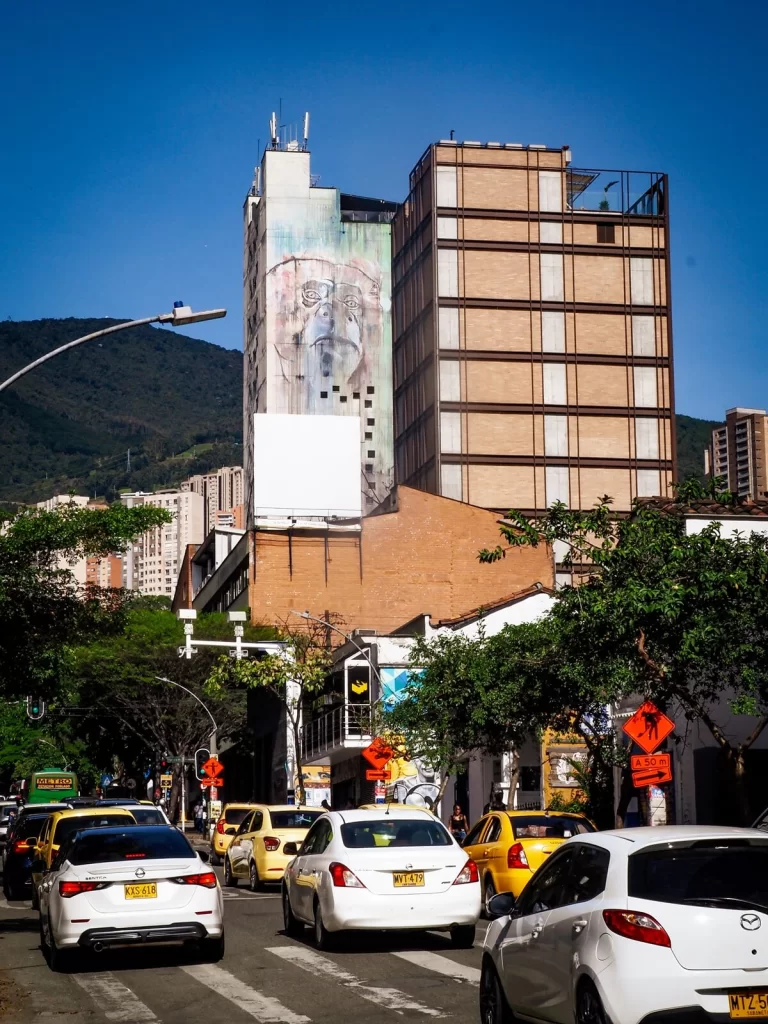
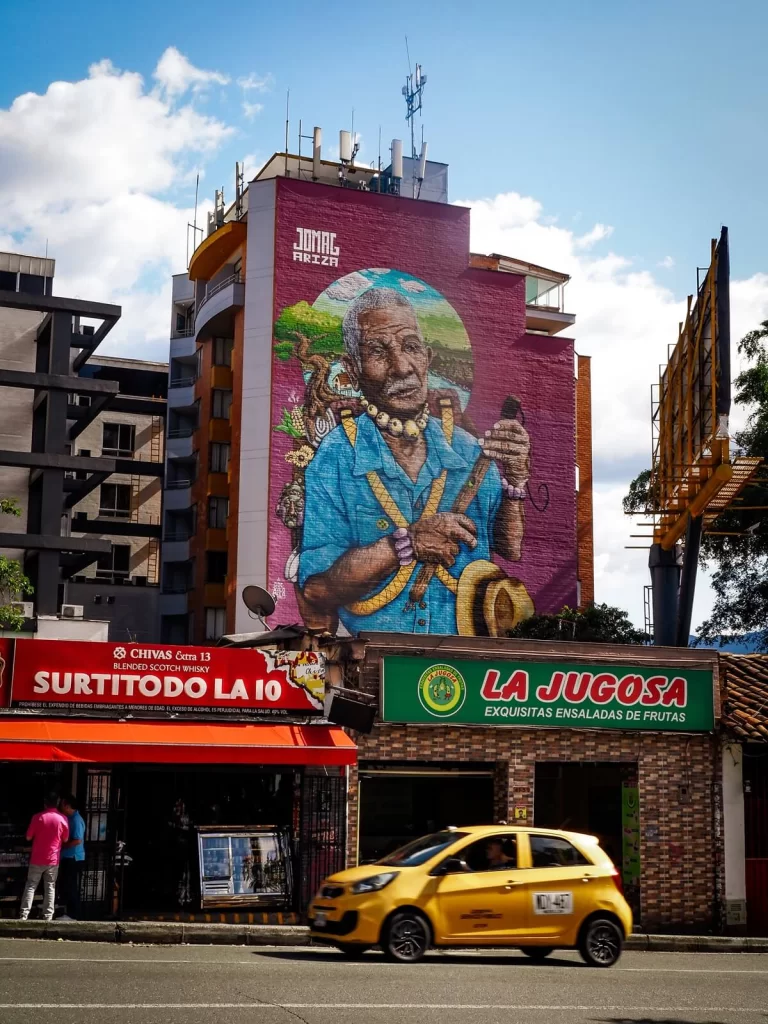
Taxi
Another way to get around Medellin is by taxi. You can hail one down or pre-book them through your hotel or hostel. You can also download apps such as Tapsi, Cabify, or Easy Taxi to book a ride.
Drivers can drive a little aggressively and the traffic in Medellin can be a bit mad! Many people use motorbikes to avoid the rush, and they can come out of nowhere from any direction, which can feel quite chaotic when you’re in a car. Seatbelts are also rarely available in the back seats.
It’s always good practice to have a local SIM card so you can follow your route on Google Maps. We always do that to make sure we’re not being taken the long-way around or somewhere completely different to where we want to go.
Now, Uber is actually not legal in Colombia, but in big cities such as Medellin it’s well-used. However, ride sharing apps like Cabify pretty much work like an Uber and are legal.
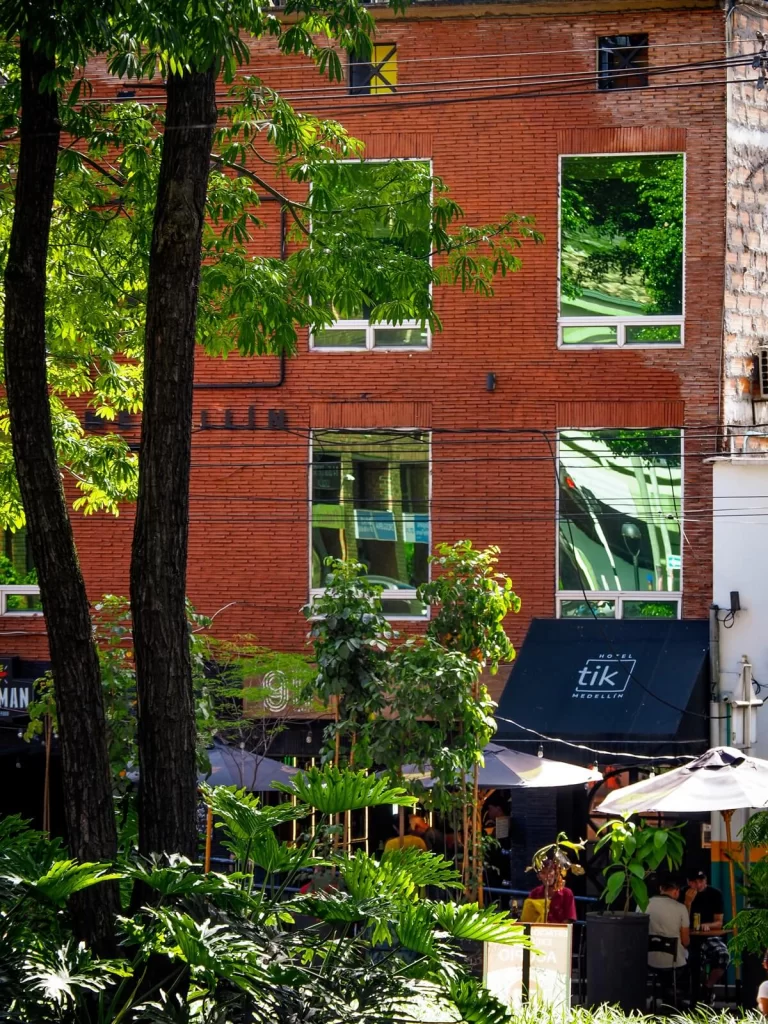
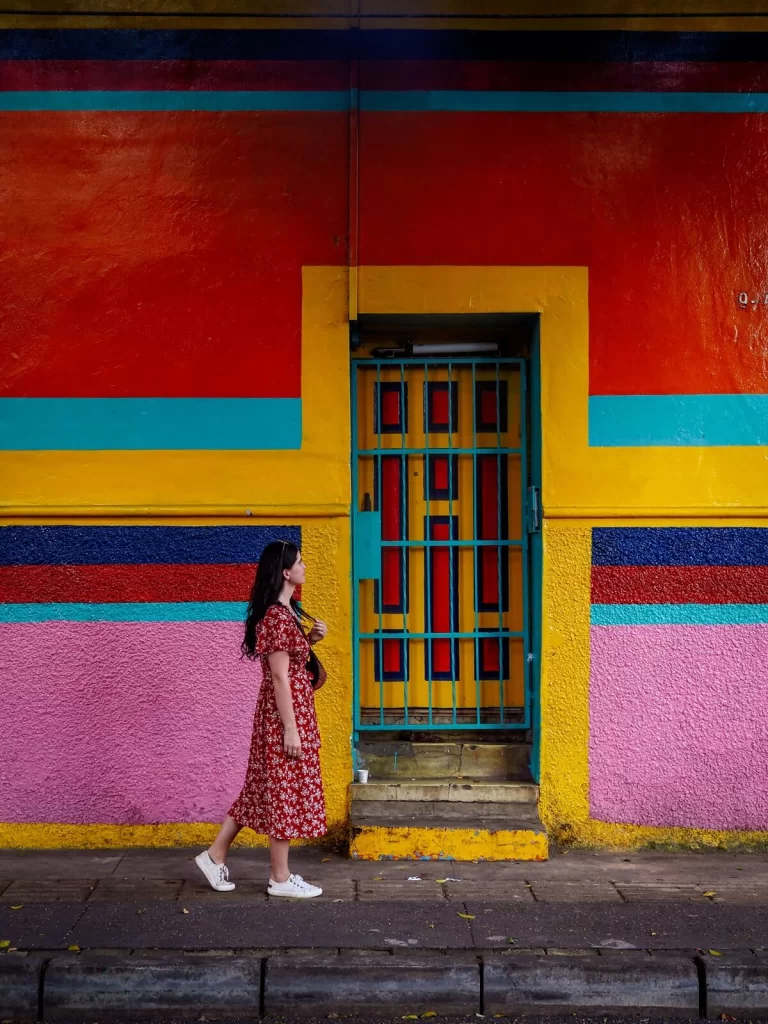
Where to Stay in Medellin, Colombia
Medellin is split into 16 different comunas or neighbourhoods. The most popular one visitors and digital nomads stay in is El Poblado. It is considered a safe area, although it’s worth highlighting that no district is completely safe.
The leafy neighbourhood of El Poblado has a great variety of hotels and hostels. You’ll also find a ton of cool cafes, bars, and restaurants here. It also has great nightlife, making El Poblado a good option if you want to experience the city after dark.
Click here for hotel options in El Poblado.
Another popular area to book your stay in Medellin in is Laureles. It is slightly more affordable than El Poblado but still has plenty of amenities such as cafes and restaurants. Laureles has more of a local atmosphere than the upscale El Poblado.
Click here for hotel options in Laureles.
Similar to Laureles, Belén is also a great option when staying in Medellin. It’s affordable and more authentic, with less tourists and expats compared to El Poblado. There are still plenty of amenities, but it’s harder to meet other travelers, and you’ll likely need to use Spanish more.
Some might consider booking a place in El Centro / La Candelaria, however that area doesn’t have the best reputation, even in daylight. If you do end up staying in the centre, then just make sure not to walk on your own after dark and be extra cautious when entering or leaving your accommodation.
Tips for booking your accommodation. Make sure to read the reviews and check the area thoroughly before booking your stay. This is especially important if you’re in Medellin for longer than a few days. We personally don’t mind spending a little extra on accommodations in buildings with better security.

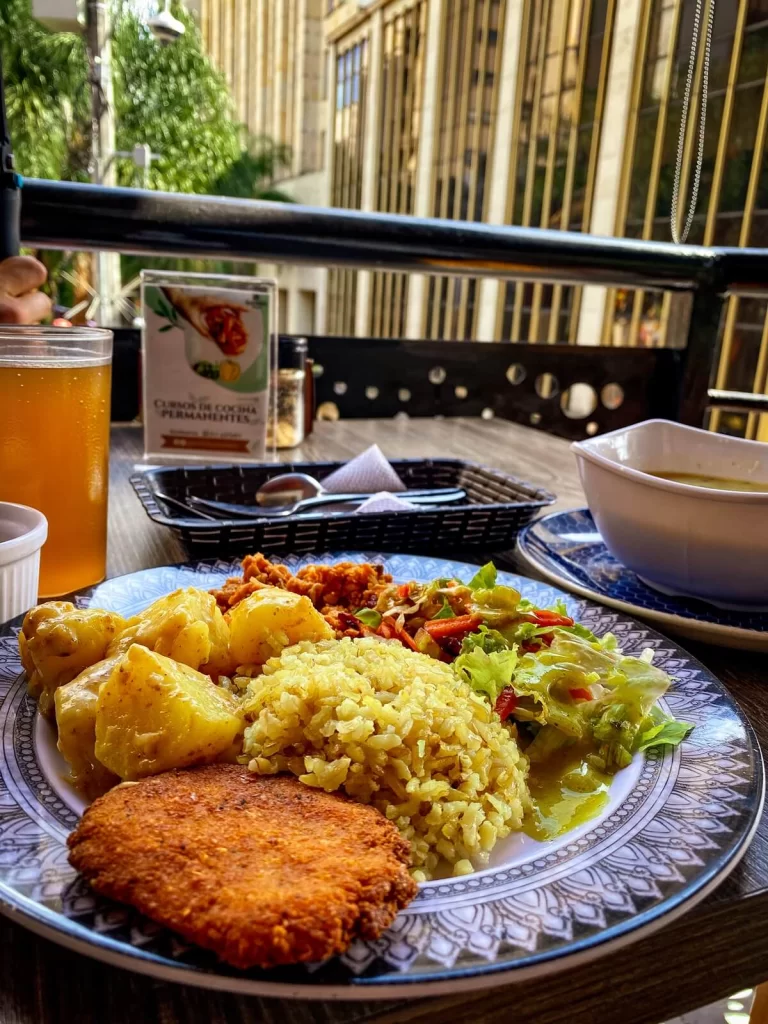
Where to Eat in Medellin, Colombia
There are plenty of places to eat in Medellin and you definitely won’t get hungry as you’re exploring the city. Below are some of the favourite spots we ate at during our stay:
- Naturalia Cafe is a lovely cafe in the Laureles neigbourhood serving lunches and deserts, including plenty of vegetarian and vegan options.
- Pergamino is another great food spot in Laurales. It serves some really good coffee, light lunches and cakes.
- Restaurante Vegetariano Govindas is a vegetarian restaurant serving some filling lunch menus in the heart of La Candelaria / El Centro.
- Mercado del Río is a trendy food market in a huge warehouse in El Poblado. It has over 50 food and drink stalls where you can try both Colombian or international cuisine.
- Apilados de Autor serves delicious and healthy meals in El Poblado.
- Cafe Velvet is a great spot in El Poblado serving really good coffee.
- Juan Valdez Cafe is basically the Starbucks of Colombia. Whilst it’s a large chain, we definitely enjoyed popping in here for a quick coffee and some pastries.
Do you want to learn more about Colombian cuisine? Then make sure to book a street food tour to have a fantastic gastronomic experience.
Final Thoughts on Medellin Travel Tips
Before arriving to Medellin we did a ton of research. Backpacking across Peru and Ecuador, we met fellow travellers who shared their own experiences in Colombia. We definitely received mixed feedback on the country, so didn’t arrive with very high expectations.
However, Medellin is a city that absolutely blew us away and became one of our favorite cities anywhere in the world. We can see why it has become so popular with digital nomads and expats.
With that being the case, Medellin is generally considered a safe city, but we were still cautious and stayed vigilant even in the safest neighbourhoods. We visited most places on foot or by metro and never had an issue. Whilst you can sometimes end up in unfortunate situations through no fault of your own, if you follow the general rules around safety you’ll most likely be fine.
Have you ever been to Medellin before? If so, what was your experience? If not, would you feel more confident spending a few days in the city after reading our guide? Let us know in the comments below.
Now, let your adventure begin,

Our Top Travel Resources
Accommodation: For hotels we always use Booking.com and Hostelworld for hostels. We also book longer stays on Airbnb or Vrbo.
Flights: To find the best flight prices we always check Skyscanner, Google Flights or WayAway. Then we also check the airlines’ websites too for comparison.
Car Rentals: We use Discover Cars when we want to rent a car as it compares local, national and international companies.
Activities: If we book organised tours we always check either GetYourGuide or Viator.
Foreign Currency: Whenever we can we prefer to pay in local currency and for that we always use our Wise card. We can easily withdraw money from the ATM or pay by card at most shops and restaurants.
Travel Insurance: We never go anywhere without travel insurance. You never know what will happen on your trip, so good travel insurance like SafetyWing can protect you in case of injury, illness, theft and cancellations.
eSIM and VPN: To get data abroad we use Airalo which is an app that allows you to download a prepaid eSIM to your phone in over 190 countries. Make sure to have a VPN to avoid hackers accessing your personal data when using public WIFI. We use Surfshark which is the only VPN that offers one account on unlimited devices.

